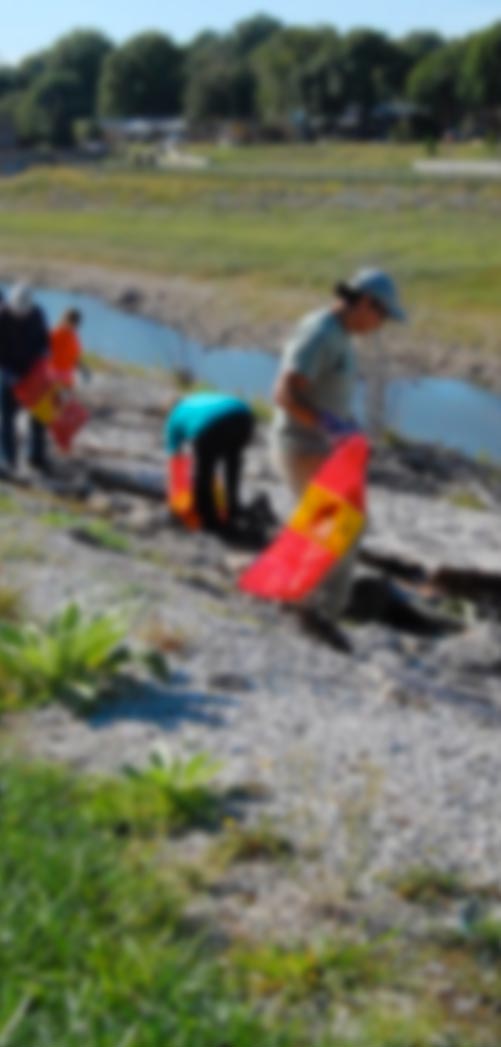The challenges facing the Aorere River have been met head on by its community and the results speak for themselves.
The Aorere River flows from the northern end of Kahurangi National Park to Golden Bay just north of Collingwood. The catchment has a high annual rainfall, up to four metres, and the river has historically been prone to flooding. Most of the catchment is covered in native bush with around 30 dairy farms making up 16% of the catchment's land area.
According to LAWA, the Aorere is ranked in the top 25% of like-sites for six of the nine parameters measured and the top 50% for the remaining three. Although the water quality of this catchment is good compared to other New Zealand rivers, it is not without its own set of challenges.
In 2004 a number of shellfish farms located close to the Aorere river mouth faced closure due to high levels of faecal indicators in the water.
The dairy farmers and local community responded by initiating the Aorere Catchment Project with support from Landcare Trust, the Sustainable Farming Fund and the Tasman District Council.
Farmers began putting measures in place to reduce run-off into the catchment’s rivers and streams. This involved fencing stock from waterways and, investing in “low rate” effluent irrigation systems with increased storage capacity meaning irrigation could be delayed if soils were too wet. This was no small task with estimated costs well over $100,000 per farm.
To complement farmer action community members formed a Streamcare Group. Volunteers raised native seedlings in a nursery sited at Collingwood Area school also linking with the enviro-schools programme on planting days. Tasman District Council subsidised riparian fencing and the marine farmers donated $10,000 to Streamcare
Through these community-led actions, marine farm harvest frequency increased from 28% in 2002 to 79% in 2009. The work didn’t end there though as the community recognized that the changes needed to be sustained into the future.
Despite best practice continuing to be employed by farmers, unexplained bacterial spikes occurred in 2012 and 2013 again causing problems for mussel and cockle harvest. Re-visiting catchment modeling done by coastal management consultants helped the community group understand the complex land/water relationship and work out what was going on.
Tasman District Council met with all stakeholders, including MPI who oversee the environmental sanitation programme for shellfish harvest. It was found the unexplained bacterial spikes, occurring outside high rainfall events, were not likely to have come from any one source. Rather, significantly increased levels of sediment in the river’s lower reaches caused by a large flood in December 2010 were a contributing factor and were adding to the complex relationship between river flows, run-off from land and bacterial concentrations.
Aorere community spokesperson Sue Brown said the support of the Council has been absolutely critical in achieving a positive outcome, with huge efforts made to facilitate a productive conversation. It enabled engagement beyond the emotion of what was a difficult period for both the aquaculture and agriculture industries.
Ms Brown said the group hopes their story can help others around New Zealand understand why it’s important to take ownership of their waterways.
“As dairy farmers we’ve gone from thinking our high annual rainfall would override any benefit from fencing waterways to understanding how much it matters in low to median rainfall events. We also now understand the benefits native re-vegetation and fish friendly culverts have on restoring stream health and this work continues.
“It’s great to know that in our lifetimes, alongside productive dairy farming businesses we can maintain, even improve water quality and that we’ll see the re-connection of ecological corridors from the sea to the bush-clad hills of Kahurangi National Park.
“What we’ve achieved is possible anywhere by taking time to understand the issues and responsibilities,” said Ms Brown.
Tasman Mayor Richard Kempthorne said that key to projects like the Aorere is the ownership taken by the stakeholders in defining the problem and identifying effective outcomes.
“It is this group, often those that live alongside or have a direct relationship with the river, who know the river best – its history, contribution and place in the community,” said Mr Kempthorne.
“When such a relationship is formed on a project there is a much greater chance of success and an increase in the understanding of all the issues driving the project forming a closer community ownership in the end. The Aorere Catchment Group has been a very effective group”
Ms Brown said LAWA presents an opportunity for communities like hers to get information.
“Thing is, New Zealand’s in a great spot water quality wise but we do have issues and change takes time. If you're worried about a waterway LAWA can tell you if anything is happening in that area. It’s more user friendly than trawling through council websites that mostly have large technical files.
“For us LAWA shares our story – and that’s important to us.”
River of the Month PDF - Aorere
Looking for more information?
You can read more about the Aorere River and the community group’s efforts at the following links:
Aorere Community’s guide to best farming practices Realistic Solutions to real farm problems
http://www.tasman.govt.nz/environment/water/rivers/river-water-quality/state-of-river-water-quality-in-tasman/river-water-quality-investigations-in-specific-catchments/aorere-river-catchment-near-collingwood/
http://www.ruraldelivery.net.nz/2007/08/aorere-catchment-whats-happening-in-the-bay/
http://www.landcare.org.nz/Regional-Focus/Nelson-Office/Aorere-Catchment
